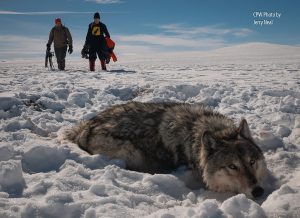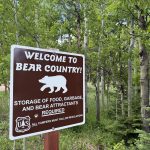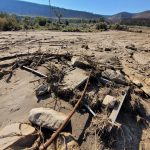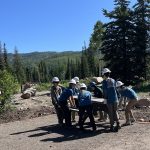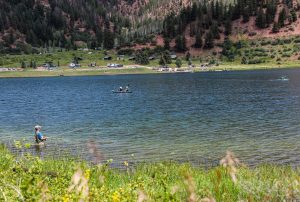Trump administration moves to kill Biden-era Public Lands Rule for Bureau of Land Management
The rule put conservation as a management priority on federal BLM land
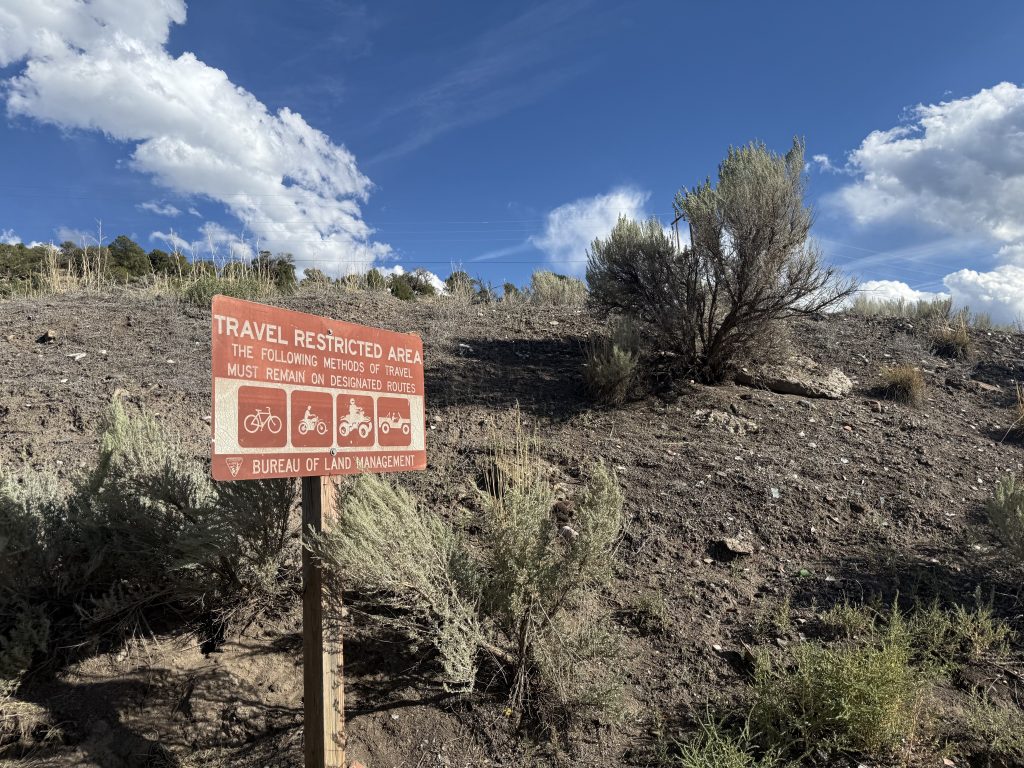
BLM sign-Eagle-ALongwell
The U.S. Department of the Interior is looking to overturn the Bureau of Land Management’s Public Lands Rule in a move that has environmental groups decrying it as a way to favor extractive industries.
The rule was implemented under the Biden administration in 2024 and recognized conservation as an essential component of the Bureau’s public lands management, placing it on equal footing with other uses such as grazing, energy and recreation.
Now, the Interior Department — which oversees the Bureau — has proposed repealing the 2024 rule, claiming that it placed “an outsized priority on conservation or no-use” at the expense of other uses.
Interior Secretary Doug Burgum said in a news release that this rule “had the potential to block access to hundreds of thousands of acres of multiple-use land — preventing energy and mineral production, timber management, grazing and recreation across the West.”
Burgum added that rescinding the rule aligns with President Donald Trump’s executive orders to increase domestic energy development and production and align with broader efforts from the department to return authority to states, counties and tribes impacted by public land management.
The federal department published its proposed rule on Sept. 10 — opening up a 60-day public comment period ending on Nov. 10.
Already, however, conservation, environmental and recreation stakeholders have started to criticize the proposal to rescind the Biden-era rule, claiming it will lead to an unbalanced approach to public land management that favors activities like drilling, mining and grazing.
“With this announcement, the administration is saying that public lands should be managed primarily for the good of powerful drilling, mining and development interests,” said Alison Flint, senior legal director at The Wilderness Society, in a statement. “They’re saying that public lands’ role in providing Americans the freedom to enjoy the outdoors, and conserve beloved places for future generations, is a second-class consideration.”
Anna Peterson, executive director of the Mountain Pact, said that this is just the latest in a number of orders and moves from the administration that attack public lands and favor extractive interests.
The Bureau manages around 245 million acres of public lands in the United States, including 8.3 million acres in Colorado. It also manages 700 million acres of subsurface mineral estate across the country and around 27 million subsurface acres in Colorado.
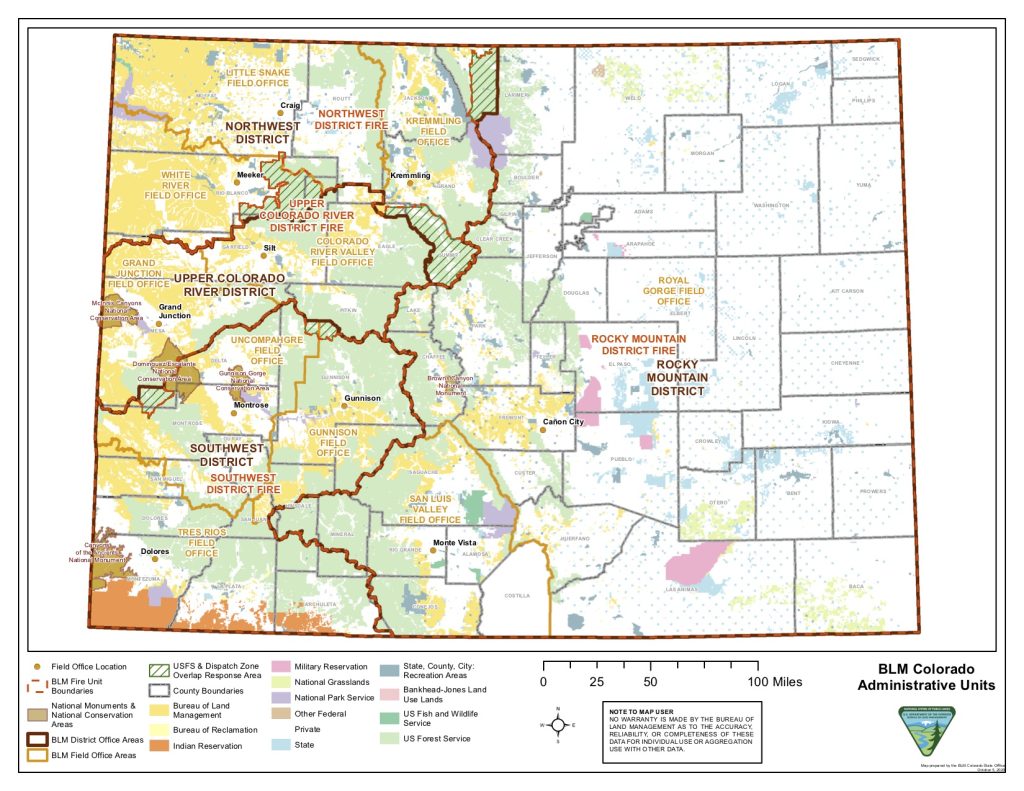
What did BLM’s Public Lands Rule do?
The federal agency’s multiple use mandate dates back to 1976 and the Federal Land Policy and Management Act, directing the Bureau to balance all these uses on the land it manages.
This law tasked the Bureau with managing the following “principal or major” uses: recreation, range, timber, minerals, watershed, wildlife and fish and natural scenic, scientific and historical values. While it required the agency balance these uses in a way that avoids permanently impacting land productivity and the quality of the environment, it did not explicitly list conservation as an official use under the multiple-use mandate.
In arguments supporting the 2024 Public Lands Rule, many environmental advocacy groups and communities argued that the 1976 act lacked direction on how to carry out multiple use and therefore led to a focus on interests such as mineral extraction and grazing. Today, around 81% of Bureau lands are open to oil and gas drilling.
The rule was proposed as a way to restore balance of uses under the Bureau’s multiple-use mandate.
In 2024, Kathy Chandler, a (now former) Eagle County commissioner, wrote in a statement that placing conservation on equal footing with other public land uses would help in a time where public lands were challenged by climate change, population growth and increasing demand for natural resources, development and outdoor recreation.
In adding conservation explicitly as a use, the Bureau’s Public Lands Rule also formalized regulatory tools and frameworks for restoring degraded public lands and water; supporting decisions with science, data, Indigenous knowledge and public input; and maintaining land that supports wildlife, habitat connectivity, old-growth forests and ecosystem functions.
For example, it created a new type of Bureau land lease, where a party could apply for a lease to restore damaged public lands or waters, as long as it didn’t interfere with existing rights or uses.
At the time the rule was created, agriculture, mining and energy industry groups argued it would result in dramatic and damaging changes to how the Bureau manages land. The U.S. Chamber of Commerce claimed that the federal rule was unnecessary as the agency was already allowed to conserve land, claiming it exceeded the multiple use mandate and would have detrimental impacts to mining, grazing and energy.
Would rescinding the rule balance uses or wreck havoc on public lands?
These arguments from both sides are now resurfacing as Trump’s Interior Department attempts to strike down the nearly 16-month old rule.
In a statement this week, Melissa Simpson, president of the Western Energy Alliance, said the rule “upended over a century of public lands management practices that strike a balance between providing the resources our nation needs with protecting the environment.”
“Whereas lands leased for oil and natural gas development are still available for numerous other uses such as recreation, land that would be set aside for conservation would restrict other productive uses,” Simpson added.
The Western Energy Alliance is a trade group representing the interests of oil and gas companies in 13 states, including Colorado.
Simpson said that the industry supports conservation and is supportive of “environmentally responsible operations,” claiming the Bureau’s Public Lands Rule “imposed unduly restrictive measures by closing unnecessarily large amounts of land to productive uses.”
However, conservation groups argue the rule was necessary to protect public lands.
Flint wrote that the proposal to rescind the Public Lands Rule is on “shaky footing” and goes against the “many months of thoughtful public engagement and review” the rule initially went through.
While Flint acknowledged that the 1976 directive from Congress provides “solid grounding” for conservation to be prioritized, she said the Public Lands Rule “is necessary to ensure compliance with long-standing direction from Congress that protecting undeveloped landscapes, wildlife habitat and cultural resources is central to BLM’s mission.”
“The administration cannot simply overthrow that statutory authority because they would prefer to let drilling and mining companies call the shots,” Flint added.
Kent Ebersole, the president of the Outdoor Industry Association — a trade group representing over 300 businesses and brands — wrote in a statement that pulling back the rule “would not only prevent accessible outdoor recreation on these vital lands but also hurt the small businesses and gateway communities that rely on it,” as well as result in the loss of public lands to logging, mining and energy development.

Support Local Journalism

Support Local Journalism
Readers around Steamboat and Routt County make the Steamboat Pilot & Today’s work possible. Your financial contribution supports our efforts to deliver quality, locally relevant journalism.
Now more than ever, your support is critical to help us keep our community informed about the evolving coronavirus pandemic and the impact it is having locally. Every contribution, however large or small, will make a difference.
Each donation will be used exclusively for the development and creation of increased news coverage.

